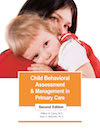 1926-2020.
1926-2020.
Dr. Carey, a pediatrician, was one of the founding members of the Temperament Consortium and a strong advocate for the application of temperament by professionals working with children.
With colleagues he developed caregiver temperament questionnaires ranging from 1 month of age until the end of the 12th year measuring the nine clinical temperament traits developed by Thomas and Chess. These, collectively, are known as the Carey Temperament Scales. They are available for use by clinicians and researchers here.
In 1995 he wrote a widely read book on how professionals could apply temperament principles to the care of children which included a review of the available research literature on the topic, entitled Coping with Children's Temperament: A Guide for Professionals.
Over the next two decades, Carey developed a comprehensive model of evaluation and intervention of behavioral issues for use by professionals. Child Behavioral Assessment and Management in Primary Care (CBAM) was published in 2012 and revised in 2016 (CBAM2). See here.
Carey viewed behavior as based on interactions between the child and environment, that could be problematic even though there was no 'disorder' causing it. The solution he advocated: "If the friction is coming from such a disharmonious interaction, the appropriate management consists of (1) recognition of the true nature of the dissonance, (2) revision of the understanding and management by the caregivers, and (3) some suggestions to the parents and others on how to find relief from their own feelings of stress."
A longstanding critic of the overdiagnosis of ADHD and treatment with stimulants, Dr. Carey was quite vocal about his views on the validity of the ADHD diagnosis, and ADHD best practices, here, here, and here.
Dr. Carey's obituary can be found here.











